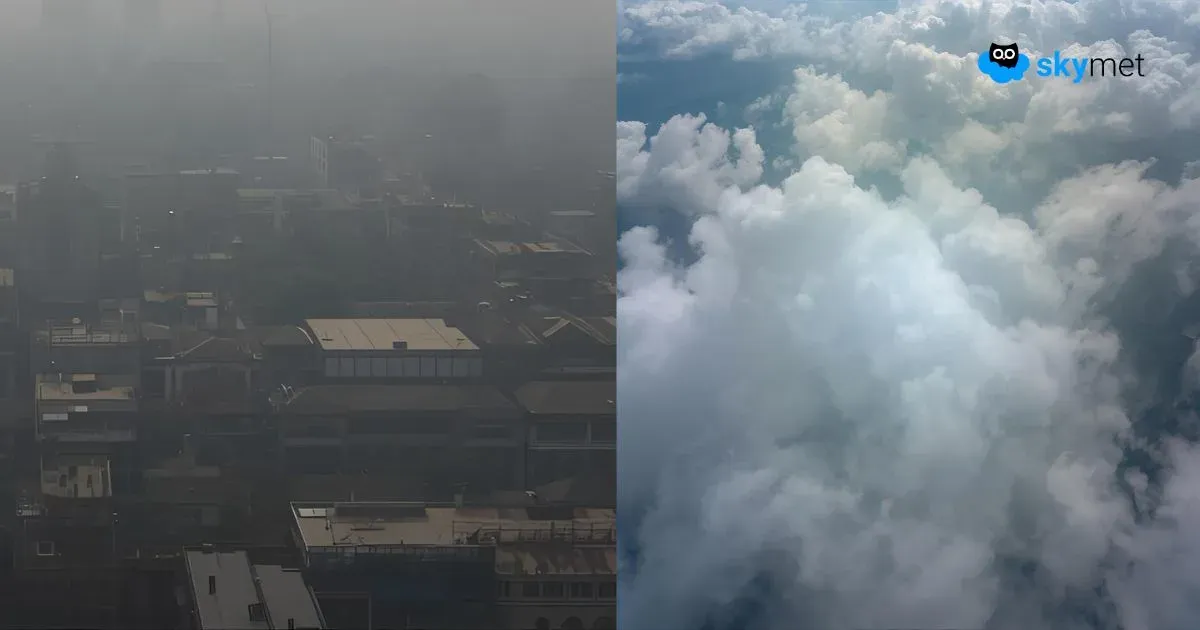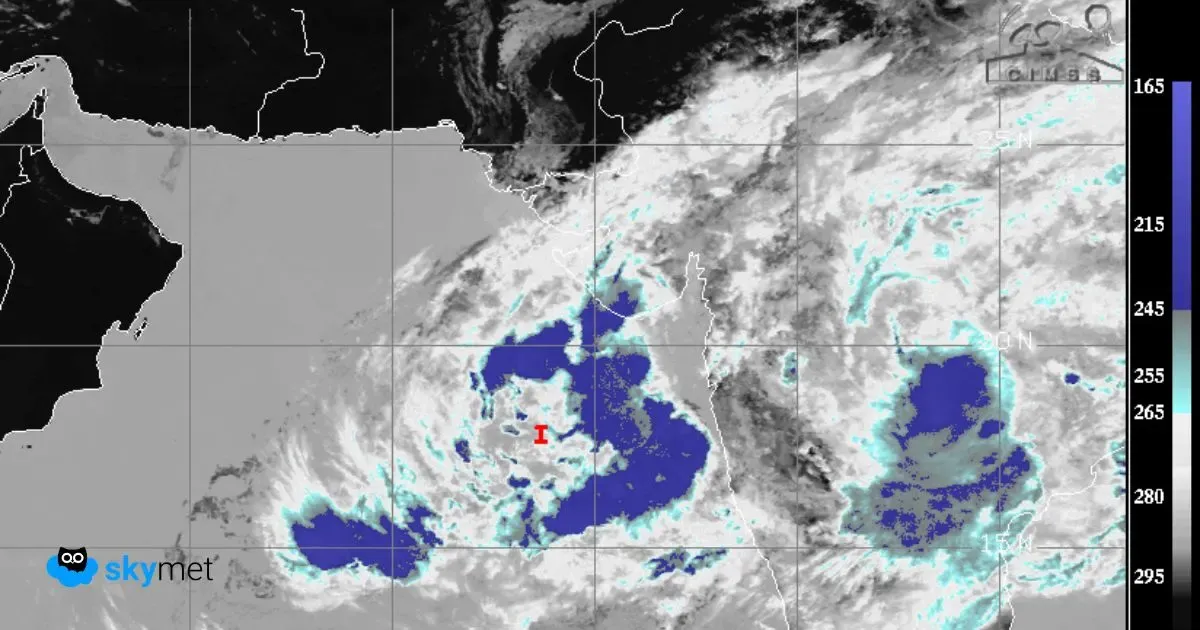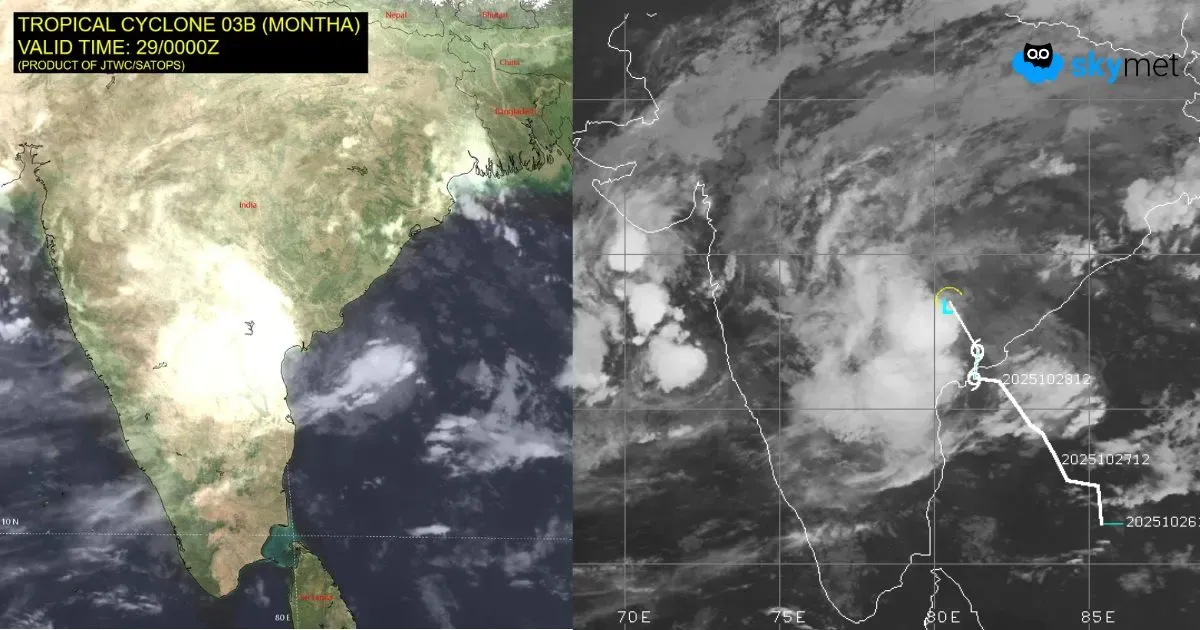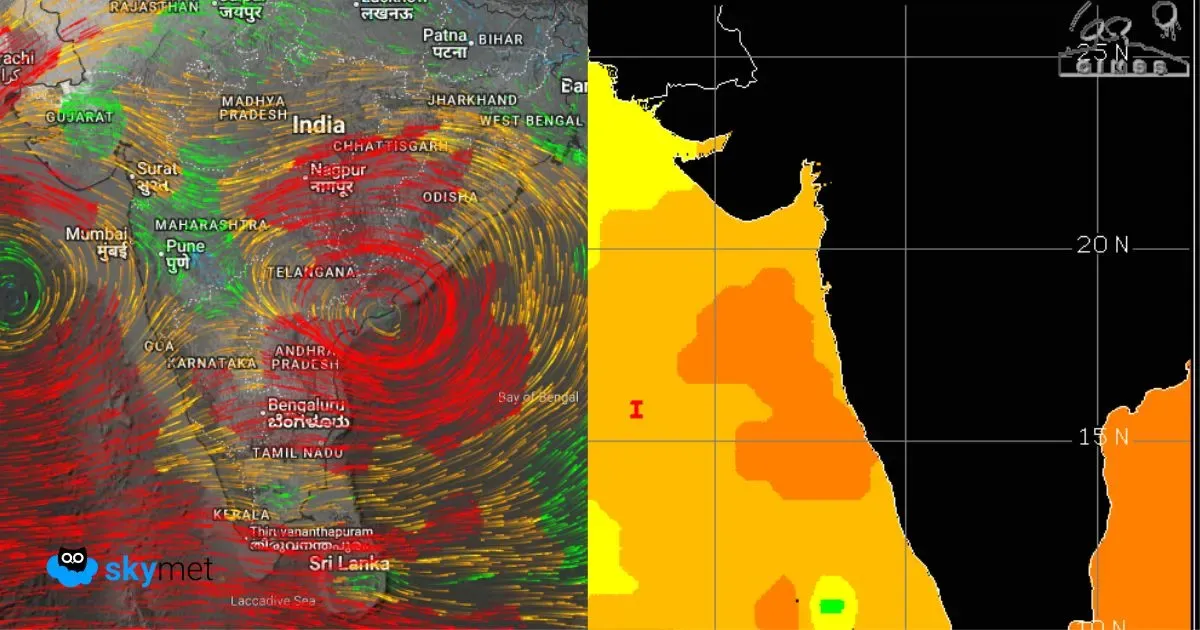Cloud seeding trials in Delhi, launched as a government-backed emergency measure against air pollution, have delivered mixed results and sparked discussion regarding both their effectiveness and scientific basis.
The official government narrative emphasizes robust planning and claims some early success, but media and public reports highlight discrepancies and skepticism.
Understanding this situation requires considering official claims, ground realities, public perception, and global precedents from similar experiments.
Despite meticulous coordination between Delhi government and IIT Kanpur, the trials yielded only trace precipitation, raising scientific questions about feasibility under current atmospheric conditions.
Why Rain Didn’t Follow
According to Prof. Manindra Agrawal (Director, IIT Kanpur), the primary constraint was the very low cloud moisture, measured at just 15–20 %, whereas typical effective seeding requires moisture levels closer to 50 %. The flight operations released the required seeding agents, but the dry and elevated cloud base prevented sufficient droplet growth and rainfall.
In addition, Skymet Weather’s analysis emphasises that cloud layers near 10,000 ft altitude make seeding far more challenging, whereas seeding is more favourably effective when cloud bases are below 5,000 ft—conditions not met in this case
Official Government Claims
Delhi’s 2025 cloud seeding operation is coordinated by the Delhi government and IIT Kanpur, with support from the India Meteorological Department (IMD) and flight clearances by DGCA. The goal is to induce artificial rain to rapidly wash out particulate matter (PM2.5, PM10) from the air, giving short-term relief from hazardous smog typical during late October and winter months.
- On October 28 and 29, two aircraft sorties dropped silver iodide-based flares over targeted areas (Khekra, Burari, Karol Bagh, Mayur Vihar, Sadakpur, Bhojpur).
- Humidity was about 15–20%, considered below the ideal threshold for seeding, yet the operation was carried out for data collection and experimentation.
- Early government statements claimed light rainfall (0.1–0.2 mm) at the Delhi-Noida border and a measurable 6–10% reduction in PM2.5 and PM10 at several monitoring stations for a few hours after the experiment.
- Environment Minister Manjinder Singh Sirsa insists these findings show “scientific progress,” with plans for up to ten more trials if atmospheric conditions improve.
Ground and Media Reports
Media investigations and public commentary reveal that the actual impact is limited and far more transient than official projections.
- Most areas saw negligible rainfall, with several reports emphasizing that observable precipitation was either absent or short-lived, casting doubt on any large-scale pollution relief.
- Ordinary residents reported little change in daily air quality and heavy skepticism about whether artificial rain can truly bring lasting benefit without addressing sources such as crop burning and vehicle emissions.
- Scientific experts and journalistic analysis concur that Delhi’s notoriously dry winter clouds rarely contain the higher moisture levels (>50%) needed for successful seeding, citing failed attempts over previous decades as precedent.
- The media also notes “repeated postponements” due to unfavorable weather over several months, as well as delays in mobilizing flights and securing clearances.
Science Behind Cloud Seeding: Discrepancies and Challenges
The science governing cloud seeding underscores why real-world outcomes often diverge from optimistic governmental announcements:
- Cloud seeding involves dispersing chemicals like silver iodide or sodium chloride onto clouds via aircraft, rockets, or drones, acting as nuclei for droplet formation only if clouds have sufficient moisture and vertical development.
- The Delhi experiment mimicked successful past efforts in drought-prone regions, but urban, winter smog conditions present unique challenges. Chronically low humidity, persistent inversion layers, and minimal vertical cloud growth severely limit outcomes.
- Most studies show that artificial rain can reduce local PM levels for a few hours to days, with the effect rapidly dissipated as emissions from traffic, agriculture, and industry continue.
- Scientific agencies like the US GAO and international review bodies note that large, well-controlled studies remain rare, and attribution of rainfall to seeding, versus ambient meteorological shifts, is fraught with uncertainty.
With such conditions missing, the follow-up operation was put on hold, as per news sources, awaiting a more favourable atmospheric setup.
International Cloud Seeding Experiences
Most successful cloud seeding programs globally have taken years of incremental trials, often requiring dozens of sorties per year and continuous monitoring before demonstrating robust efficacy. Some key examples:
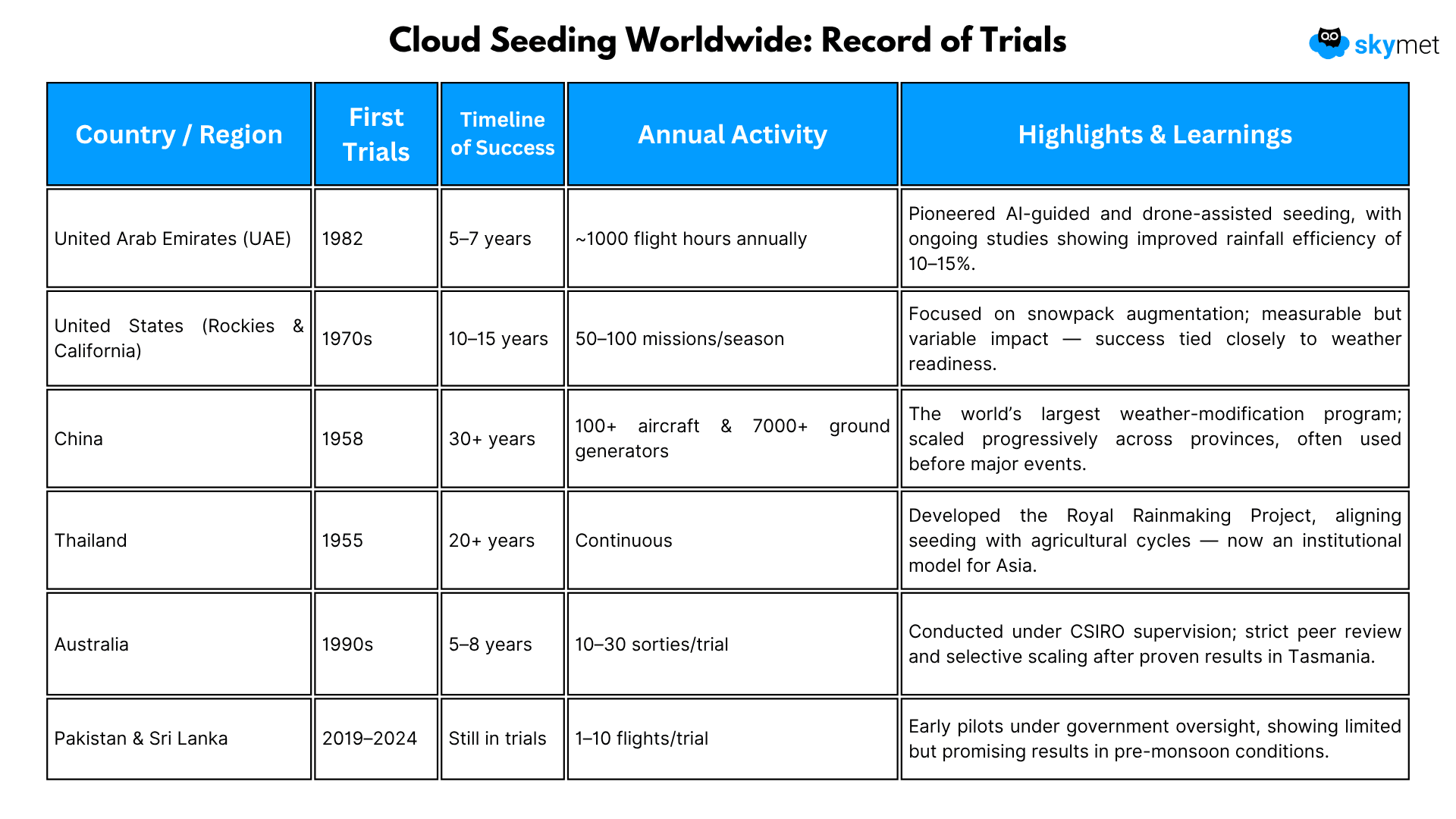
In summary, cloud seeding for pollution control in Delhi is in a nascent experimental stage. International examples show that sustained, successful outcomes in rainfall enhancement typically result from years of targeted research, dozens to hundreds of experimental flights, and favorable meteorological conditions. Results for urban pollution control are even less established, and experts caution against seeing the technique as a substitute for direct emission reductions.
Is Cloud Seeding a Permanent Fix?
Experts agree that cloud seeding cannot be viewed as a permanent or large-scale pollution control measure. It is designed as an emergency intervention, capable of providing short-term relief by enhancing rainfall and temporarily cleansing the lower atmosphere of pollutants. However, sustainable improvement in Delhi’s air quality depends on long-term emission control—addressing vehicular exhaust, stubble burning, and industrial emissions—rather than relying solely on artificial precipitation.
Must Read: Depression Over Arabian Sea To Linger On: Saurashtra- Konkan Weather Activity To Continue
Source attribution: WMO, NCAR, UAE National Center of Meteorology, and other weather modification agencies.


